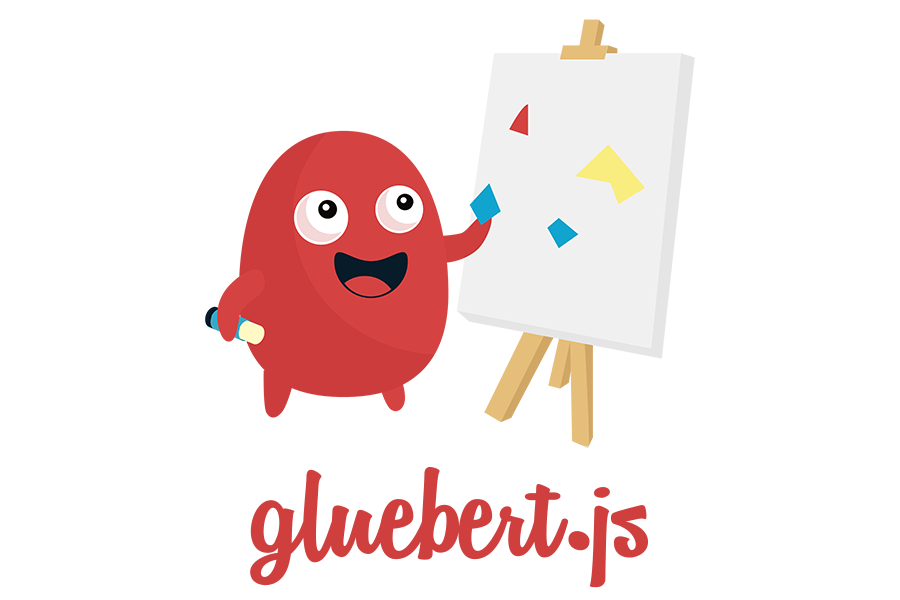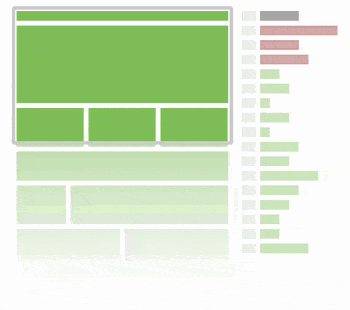
gluebert.js === lazy load *
gluebert.js is a helper lazy loading DOM elements, StyleSheets and JavaScript files using dynamic import and code splitting.
tl;dr
- ✂ Code Splitting and dynamic import
- 🔭 Mutation- and IntersectionObserver
- 📯 Observable streams by RxJS
- 🗑 No payload and computation waste
- 🐲 Legacy Browser Support back to IE11
- 📚 Here is a documentation

installation by package managers
via npm
npm install gluebert --savevia yarn
yarn add gluebertGetting started by examples
git clone git@github.com:wildhaber/gluebert-getting-started.gitcd gluebert-getting-startednpm installnpm run buildnpm run serveGluebert CLI
Build modules directly from the terminal:
npm install gluebert-cli -g
See documentation to gluebert-cli here: https://github.com/wildhaber/gluebert-cli
Get familiar with underlaying concepts
Webpack's code-splitting and dynamic import
Webpack is a module bundler that bundles your scripts and assets into one big bundle - or with some configurations it creates little code-chunks working perfectly together. Code Splitting and dynamic import are following the best practices for the HTTP/2-Standard.
An excerpt of the abstract from HTTP/2:
This specification describes an optimized expression of the semantics of the Hypertext Transfer Protocol (HTTP), referred to as HTTP version 2 (HTTP/2). HTTP/2 enables a more efficient use of network resources and a reduced perception of latency by introducing header field compression and allowing multiple concurrent exchanges on the same connection. ...
While the dynamic import concept follows a proposal from tc39 that basically allows importing ressources on runtime by import(), which returns a promise. This way you can avoid the high payload, when imports are just at the top of the file like import { SomeThing} from './some-thing', but basically, dynamic imports are a Promise translation of them.
MutationObserver and IntersectionObserver
MutationObserver are tracking changes in your DOM and lazy binding module signatures and executes them, when an element appears in the viewport using IntersectionObservers.
Observable streams by RxJS
To organize, sending and receiving Data through your application there are observable streams available provided by RxJS.
Related Concepts
| Related Resource | Documentation |
|---|---|
| Webpack | webpack.js.org |
| Webpack Code Splitting | webpack.js.org/guides/code-splitting/ |
| Dynamic Import Proposal by TC39 | tc39/proposal-dynamic-import |
| HTTP/2 RFC | http2.github.io |
| MutationObserver | developer.mozilla.org/en-US/docs/Web/API/Intersection_Observer |
| IntersectionObserver | developer.mozilla.org/en-US/docs/Web/API/Intersection_Observer_API |
Installation and QuickStart
We recommend following the installation guide or if you are in a hurry,
git clone git@github.com:wildhaber/gluebert-getting-started.gitcd gluebert-getting-startednpm installnpm run buildnpm run serveGluebert instance
Starting a gluebert instance can look like this:
; const MODULES = ; // list of module signatures to watchconst DATA = ; // list of data signatures to watch const gluebert = MODULES DATA; gluebertstart; // Bootstrap your gluebert applicationModule Signature
A module signature prepares loaders for everything (basically Controller and Styles) used for a certain module.
// lazy-img.module.js ; /** * ModuleSignature for lazy image loader * @type */const LAZY_IMG_MODULE = `lazy-img` `.c-lazy-img` // Prepared controller that will be imported, as soon as a selector (e.g. '.c-lazy-img') appears // Prepared stylesheets that will be imported, as soon as a certain element appears ; ;Module Controller
A module controller will be instaciated every time an actual element appears in the viewport. For the above example with a lazy loaded image, this could look like:
// lazy-img.controller.js ; /** * Class represents LazyImgController * @extends ControllerAbstract */ /** * creates a new LazyImgController instance * @param * @param * @param */ { superelement data elements dependencies; this_src = typeof elementdatasetsrc === 'string' ? elementdatasetsrc : null; ifthis_src this; } { this_element; this_element; this_element; } ;The styling example
For the sake of completion, following an example of the lazy loaded image. So it will be blurry, while not loaded:
// lazy-img.styles.scss }}Inject the modules in the gluebert instance
Remember, the gluebert instance above had an empty array passed to the gluebert-instance. Let's inject the lazy-img-Module.
;; const MODULES = LAZY_IMG_MODULE;const DATA = ; // list of data signatures to watch const gluebert = MODULES DATA; gluebertstart; // Bootstrap your gluebert applicationAssume, you have an index.html like:
Shortcut HTML, just for Example ...a lot of content... ...even more content... And your image will load smoothly and lazy now. All necessary assets like styling and controller in our example will only load and execute, when the user scrolls to the image. Otherwise - no payload or computation except for the minimal signature will happen.
Cool, isn't it?
Prevent FOUC
To avoid a Flash of Unstyled Content (FOUC), there are techniques like the Critical Path CSS.
Reduce Network Requests and Offline Support
And to cache the import request, even when a user is offline - read more about Offline First ServiceWorkers.
This is just the core peak of gluebert.js
Learn more about Topics like:
- Gluebert Instance
- Module Signatures
- Module Controller
- Custom Elements
- Template Engines
- Data Management
- Data Messages
## Contribute
Everyone is very welcome to contribute, either reporting issues (Bugs, Feature-Requests, Questions etc.) or develop own features, improvements or bugfixes.
For everything you do, assume positive intent behind anything. Don't blame anyone for anything. We are one big family of developers that wants to improve ourselve as well as the way we deal with technologies.
### Reporting issues
Please be as discriptive as possible, include a brief description of what your topic is about and include as much details as possible so anyone can understand your concern.
Ideal content:
- Description
- Including Screenshots
- Providing links to similar examples
- Add code examples / even pseudo code will help
- Add environment and browser details if you report bugs
Development
First, create your own fork of this repository and develop within your fork, from there you can make pull requests against the main repostiory.
Documentation, how to fork a repository: https://help.github.com/articles/fork-a-repo/#fork-an-example-repository
# cloning your fork git clone git@github.com:<your-github-username>/gluebert.gitCreate branches for every feature or bugfix and keep separation of concerns, so don't develop 5 different features in one branch. Use a separate branch for every feature.
# crate a branch like this git checkout -b feature/<my-initials>-description-of-your-featureNext, do an npm install on the root folder. So you have all necessary dependencies installed.
In the main src/-folder are all necessary files that runs gluebert. You can run npm run build or npm run build:watch to generate the necessary files in the dist-folder.
To have an environment ready where everything is prepared, you can explore the content under documentation, its the actual website that is rendered from this folder. Running and building the documentation needs to have hugo installed. Hugo is a static site generator that runs with go. You can install it by brew:
brew install hugoAfter you have hugo installed, head to /documentation/themes/gluebert/ and do an npm install there. So you have a proper development environment.
There you have the commands like npm run build:dev-command to build, or even more convenient npm run build:watch watching and rebuilding on changes.
in a separate terminal window you can head to documentation/ and run hugo server --watch --disableLiveReload and you get your server up and running at http://localhost:1313.
In a short (expecting you have installed hugo already):
# install dependencies # cd gluebert/ npm installcd documentation/themes/gluebert/npm installnpm run build:watch # open a separate terminal window cd documentation/hugo server --watch --disableLiveReloadIt's clearly not a perfect development environment yet. You are more than welcome to give us any feedback :-)
Happy coding, and thanks for any contribution 👍

